Search results for: 'bronze'
-
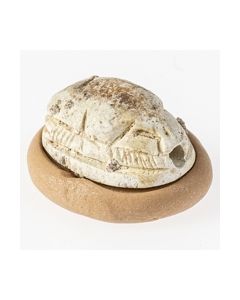 Canaanite scarab with pseudo hieroglyphs
Canaanite scarab with pseudo hieroglyphsThe scarab amulet was made during the Second Intermediate Period of Egypt or slightly later in Canaan. It has pseudo hieroglyphs on the bottom side.
Price: on request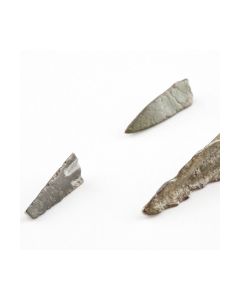 Group of 3 Scythian-Greek arrow heads
Group of 3 Scythian-Greek arrow headsMarkant geformte antike Bronzepfeilspitzen. Dreiflüglig, eine mit großen Blättern. Exzellente Erhaltung mit schöner Patina. Typisch für skythische Völker ab ca. 700 v.Chr.
Price: on request Gruppe von 3 skythisch-griechischen Pfeilspitzen
Gruppe von 3 skythisch-griechischen PfeilspitzenMarkant geformte antike Bronzepfeilspitzen. Dreiflüglig, eine massiv, mit großen Blättern und Widerhacken. Exzellente Erhaltung mit schöner Patina.
Price: on request Gruppe von 3 skythisch-griechischen Pfeilspitzen
Gruppe von 3 skythisch-griechischen PfeilspitzenMarkant geformte antike Bronzepfeilspitzen. Dreiflüglig, eine mit großen Blättern. Exzellente Erhaltung mit schöner Patina. Typisch für skythische Völker ab ca. 700 v.Chr.
Price: on request Römische Münzen aus Lot
Römische Münzen aus LotVon Augustus und Agrippa bis zu byzantinischen Prägungen. Diverse Nominale, Durchmesser bis 29 mm. Teils Silber / mit Resten von Silberauflage. Einzelverkauf aus Lot.
Price: on request Phrygische Dreieckfibel aus Zentralanatolien
Phrygische Dreieckfibel aus ZentralanatolienAufwendig gestaltet, mit komplett erhaltener Nadel. Mitte 8. Jh. v. Chr. bis 7. Jh. v. Chr. Aus alter deutscher Privatsammlung.
Price: on request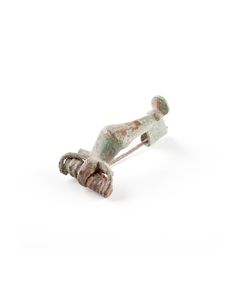 Römische Kniefibel
Römische KniefibelKaiserzeitliche Fibel vom Typ der Kniefibeln. Variante mit ungedeckter Spiralhalterung der Feder. 2. Jh. n. Chr. 44mm lang.
Price: on request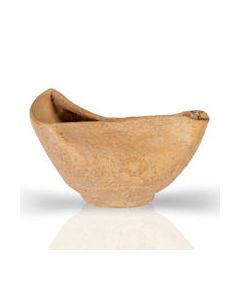 Published pinched bowl lamp from Adler collection
Published pinched bowl lamp from Adler collectionSmall bowl folded in the middle and pinched to form two holes. From the famous Judge Dr. Steve Adler collection. Exported from Israel with IAA permit Nr. 53397.
Price: on request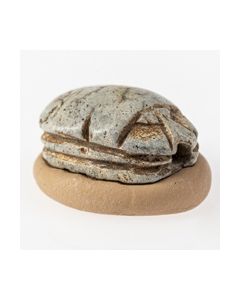 Canaanite scarab
Canaanite scarabLocal levantine production during the 13th to 15th dynasty of Egypt. With an export permit from the Israel Antiquities Authority.
Price: on request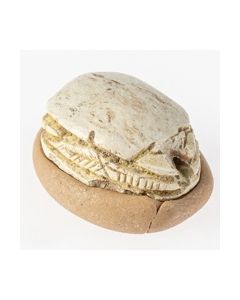 Canaanite scarab
Canaanite scarabLocal levantine production during the 13th to 15th dynasty of Egypt. With an export permit from the Israel Antiquities Authority.
Price: on request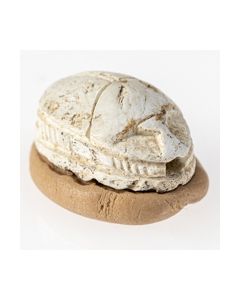 Canaanite scarab with pseudo hieroglyphs
Canaanite scarab with pseudo hieroglyphsThe scarab amulet was made during the Second Intermediate Period of Egypt or slightly later in Canaan. It has pseudo hieroglyphs on the bottom side.
Price: on request Old Babylonian cylinder seal
Old Babylonian cylinder sealThis Old Babylonian seal with a worship scene is made from lapis lazuli, a very rare choice for this period.
Price: on request Celtic neck ring
Celtic neck ringOpen ring made of solid bronze. The torc is from Gaul or Central Europe and dates to the 4th or 3rd century BC.
Price: on request Syrian amulet in animal shape
Syrian amulet in animal shapeSmall amulet of nice red stone in the stylized shape of a pig. From the 3rd Millenium BC.
Price: on request Two Mesopotamian mosaic cones
Two Mesopotamian mosaic conesThe pieces were part of a mosaic decoration of a Mesopotamian structure in the 4th Millenium BC. The temple architecture from Uruk is a particularly well known example of such a use.
Price: on request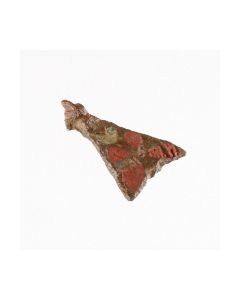 Roman cicada brooch
Roman cicada broochBrooch in the shape of an insect. Popular type in the northern Roman provinces during the 2nd century.
Price: on request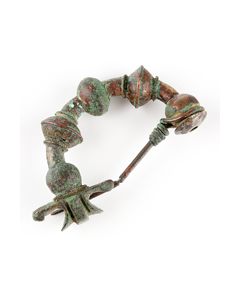 Zentralanatolische Bogenfibel
Zentralanatolische BogenfibelBügel mit fünf kugelartige Zierkörper. Die Nadel ist mit einer Wickelung am Fußende befestigt. 7. bis 6. Jh. v. Chr.
Price: on request Luristanischer Lappendolch aus der Eisenzeit
Luristanischer Lappendolch aus der EisenzeitLange, schlanke Klinge, vorne spitz zulaufend. Metallkörper vollständig und intakt, in sehr guter Erhaltung. Schöne Patina.
Price: on request Luristan point of a spear or arrow
Luristan point of a spear or arrowDouble-edged blade of a small spear or large arrow from the Early Iron Age of Iran.
Price: on request Mesopotamian cylinder seal
Mesopotamian cylinder sealThe marble seal bears a fight scene with lions. From the Early Dynastic or Akkadian period in the later 3rd Millennium BC.
Price: on request Römische Scheibenfibel in Millefiori-Technik
Römische Scheibenfibel in Millefiori-TechnikKunstvolle Fibel aus der Kaiserzeit. Großartiges Beispiel für die antike Millefiori-Technik, die erst wieder in der Neuzeit aufgegriffen und von venezianischen Glaskünstlern zu einer neuen Blüte geführt wurde.
Price: on request Roman fibula with beautiful enamel
Roman fibula with beautiful enamelElaborate work dating to the 2nd century AD. The well preserved enamel is a testimony to the colourful world of ancient art.
Price: on request Driking cup of the Troy type
Driking cup of the Troy typeSo-called Depas Amphikypellon from around 2500 BC. The famous type of drinking vessel from Troy as described in Homer's Iliad.
Price: on request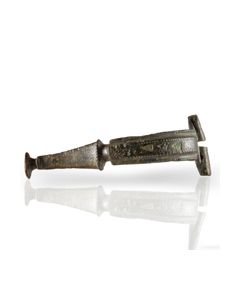 Roman Hod Hill brooch from the Hattatt collection
Roman Hod Hill brooch from the Hattatt collectionNice and rare enameled variant of the Hod Hill type. Found in Norfolk, UK. The piece is published in two books by Richard Hattatt.
Price: on request Roman surgical probe made of silver
Roman surgical probe made of silverThe so-called specillum was standard issue for roman doctors. Similar probes are still in use today. Ancient surgical instruments made of silver are extremely rare.
Price: on request Large Etruscan bucchero oinochoe from Orvieto
Large Etruscan bucchero oinochoe from OrvietoPerfectly preserved, impressive jar. Never damaged or restored. Worth the exhibition in a museum. From the old German collection Dr. Tillmann. Coming with an Art Loss certificate.
Price: on request Rare frog fibula
Rare frog fibulaZoomorphic fibula dating to the Roman Principate. Very nice enameled work. Rare variant of this popular fibula type from Roman Gaul.
Price: on request Disc brooch from Roman Britain
Disc brooch from Roman BritainNicely enameled brooch with a Romano-Celtic sunburst design. From the 2nd century AD. Published in two stardard works on ancient brooches by Richard Hattatt.
Price: on request Enameled disc brooch from Britain
Enameled disc brooch from BritainColourful enameled brooch from the Roman Imperial period. Published in two stardard works on ancient brooches by Richard Hattatt.
Price: on request Beilkopf aus der Jungsteinzeit
Beilkopf aus der JungsteinzeitKlinge eines dünnblattigen Dicknackenbeils. Trapezförmiger Körper mit grob bearbeiteten Seiten. Ganggrabzeit bis Dolchzeit.
Price: on request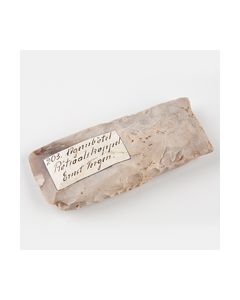 Flaches Rechteckbeil der Trichterbecherkultur
Flaches Rechteckbeil der TrichterbecherkulturAlle Seiten fein bearbeitet, jedoch nur die Schneide poliert. Flache, dünnnackige Klinge. Gefunden um 1900 in Negernbötel, Schleswig-Holstein.
Price: on request Pair of earrings from Luristan
Pair of earrings from LuristanThe earrings date to the early Iron Age of Luristan. The type of jewellery is rare for this region.
Price: on request Schmales Dicknackenbeil der Trichterbecherkultur
Schmales Dicknackenbeil der TrichterbecherkulturDer kleine und elegante Beilkopf beeindruckt durch seine gute Erhaltung und ausgewogenen Proportionen. In diesem Zustand absolut museumswürdig! Ganggrabzeit bis Dolchzeit.
Price: on request Kleines Trapezbeil der Trichterbecherkultur
Kleines Trapezbeil der TrichterbecherkulturKlinge eines kleinen Beils mit dünnem Nacken aus schönem grauen Flint. Vermutlich für feine Arbeiten eingesetzt, z.B. zum Häuten. Dolmenzeit bis Ganggrabzeit.
Price: on request Interessanter Beilkopf aus dem späten Neolithikum
Interessanter Beilkopf aus dem späten NeolithikumBemerkenswert ist die grobe Bearbeitung ohne Politur, möglicherweise handelt es sich um ein unfertiges Werkstück. Etwa 2800 bis 2300 v. Chr.
Price: on request Dicknackenbeil aus dem Neolithikum
Dicknackenbeil aus dem NeolithikumKlinge eines dünnblattigen Dicknackenbeils. Trapezförmiger Körper mit schön polierten Breitseiten. Ganggrabzeit bis Dolchzeit.
Price: on request

